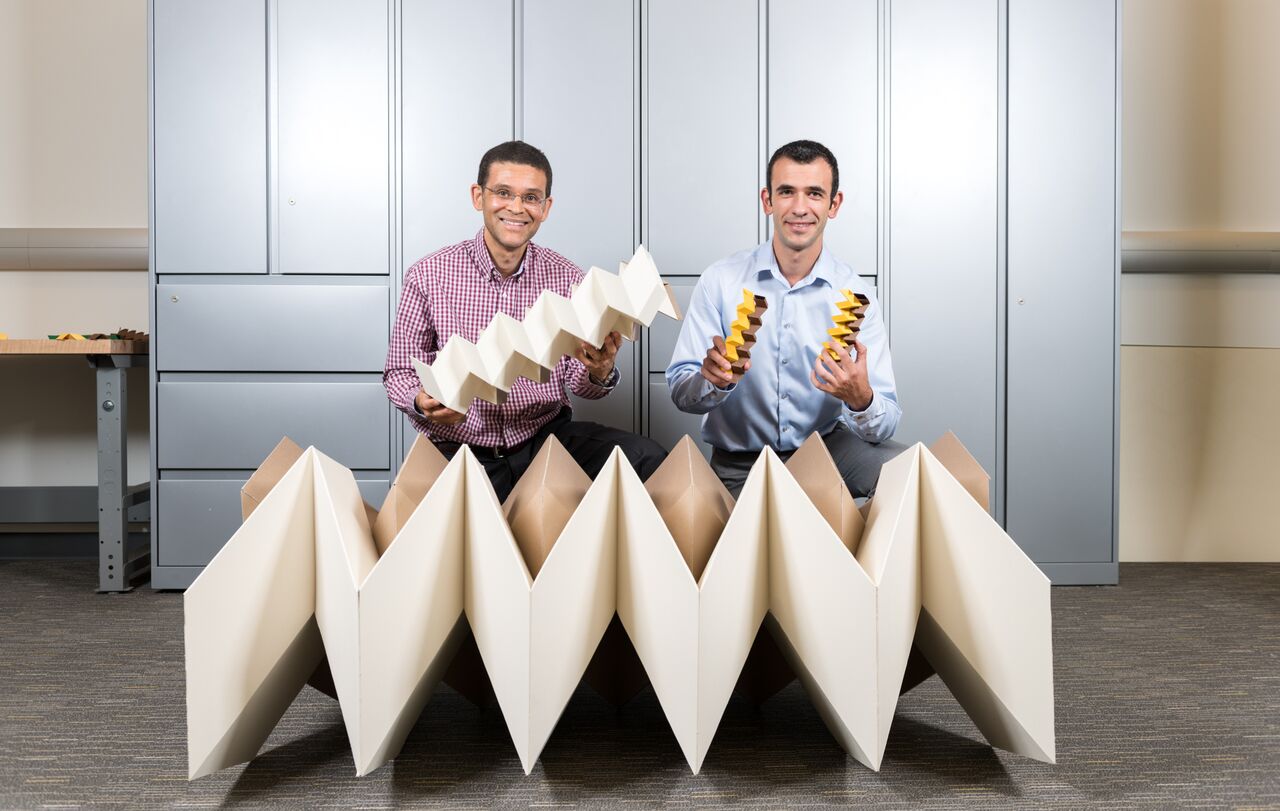Origami has been the inspiration for a new and innovative way to create structures that are both stiff and flexible, with the potential to be used in different sectors such as aerospace, architecture and robotics. Origami is known as the ancient and delicate art of paper folding. The first thing that springs to mind tends to be a small and beautifully crafted crane.
Origami is known as the ancient and delicate art of paper folding. The first thing that springs to mind tends to be a small and beautifully crafted crane.
However these new structures are incredibly strong, whilst also being able to fold into a flat, compact area for storage and shipping.
Usually, scientific work is only applicable at one scale, but because the design is based entirely on the geometry of the structure, applications range from micro and nano scales to much larger structures.
Co-author Professor Glaucio Paulino from the Georgia Institute of Technology believes that they would have useful applications in many areas. "Applications could range from robotic arms to much smaller scales like synthetic man-made materials."
Although these structures are created from paper, they could also be applied to other thin materials such as plastics or metals.
The origami technique used by the researchers is known as Miura-ori folding. This is the method of folding a flat piece of paper into a much smaller area that can expand and contract in one smooth movement. By gluing two of these folded, mirrored sheets together lengthways, it creates a tubular structure that is far stiffer than the original, flexible piece of paper.
The team of researchers who published their work in PNAS this week, build their origami tubes in a parallel, zipper-like design to create paper structures where their creases interlock. This means the tubes can expand and contract easily whilst being stiff for other bending and twisting movements.
This technique is useful if the structures needed to be delivered and then deployed. For example, if a large structure was to be sent into space, it could be built into a smaller structure, delivered to its final destination and then expanded on location. It would also give a strong and stable structure if an emergency shelter was needed quickly.
Paulino uses the example of a rubber band to explain how these structures are different to other fully formed materials: "If you stretch it, the cross-section of the rubber becomes thinner and thinner until it breaks."
However, when you extend these structures, the cross-section of the object enlarges substantially.
Configurations with such properties are called auxetic and they possess very attractive characteristics such as high energy absorption and damage resistance, which have applications in body armour and knee pads.
- Previous In search of Dark Matter
- Next Gene signal informs Alzheimer's risk










Comments
Add a comment